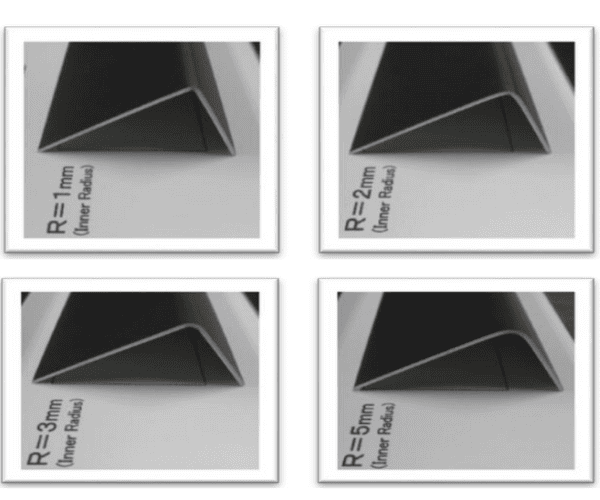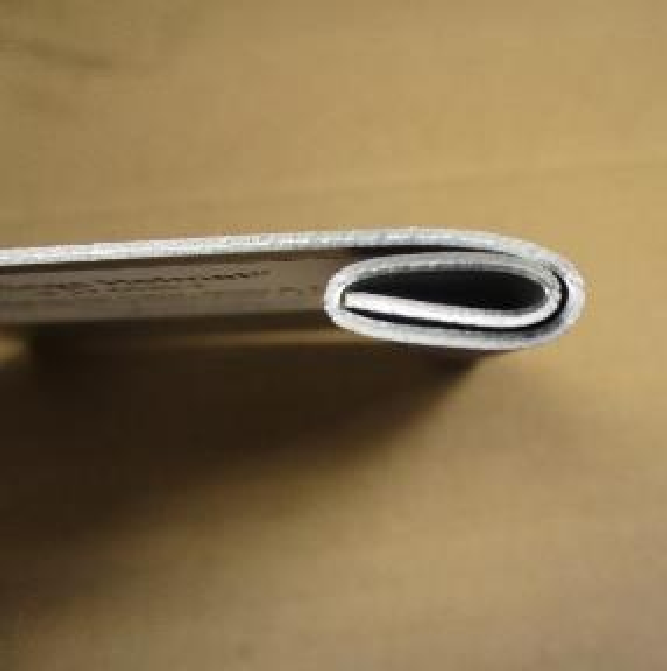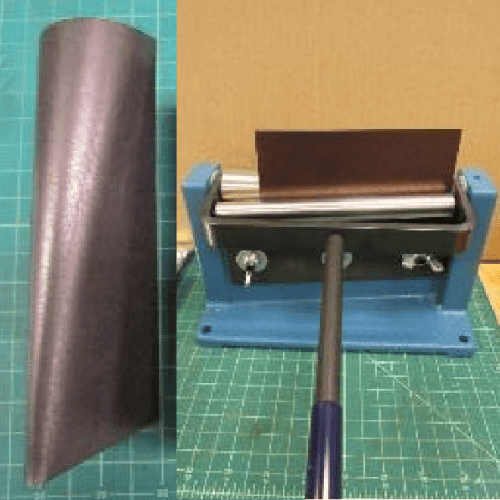
ASTM Coating Strength
While most of our daily lives has felt like it has slowed down over the past few months, things have been ramping up at Pure + FreeForm!
Over the past few months, we were able to have 3 additional ASTM certified tests completed on our materials to help answer the common question, “How strong is a precoated sheet during fabrication?”


ASTM D4145 – Coating Flexibility
The coating flexibility test measures the strength of adhesion between coating and substrate of precoated sheets to show the coating does not peel or crack during the fabrication process. The sheets are folded over upon themselves, called a T-bend, with the coated side on the exterior. ASTM D3359 tape is placed on this bent portion and quickly removed. The tape is observed to assess if any of the coating has come off and the bent metal is visually observed to see if there are obvious cracks. Overall, our finishes showed no pickoff and no visible deleterious effects when bent using the T-Bend.
ASTM D522 – Conical Mandrel Bend
This is another bend test, but rather than a T-bend, this test bends the material into a conical shape to measure the strength of the coating to resist cracking when elongated. The sheets are formed into a cone shape and the coating thickness is measured and observed. Ideally, the coating thickness will be the same at the narrow portion and the wide portion with no cracks in the coating showing the strength of the adhesion of the coating to the substrate. Overall, our finishes showed no coating cracks or substrate cracks when bent conically.

ASTM D2244 – Color Difference Evaluation of Coated Aluminum
Color differences of opaque painted materials should be minimal, to show consistency in the material from one iteration to the next so that the same material is perceived as visually uniform. This test measures the color differences of painted aluminum in daylight, but unlike the other tests does not have a pass/fail rating. Instead, the CMC Color Difference is measured to identify how far from a standard the color varies, within an acceptable tolerance range. Numbers closer to 0 indicate little difference, with most tolerance levels set up to 1.0 as these are typically still invisible to the naked eye. Our finishes showed that there were no color differences visible to the naked eye.
You can view our full test results by downloading the report on our Product Facts page!






